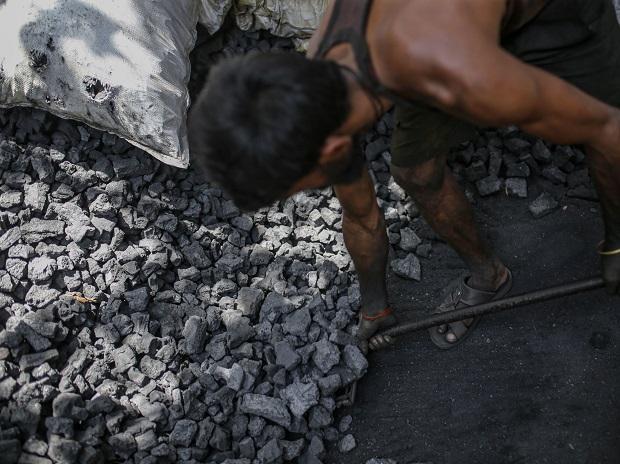On November 3, Union Finance Minister Nirmala Sitharaman launched the biggest-ever coal mine auction of 141 mines in India. “A fast-growing economy like India needs greater investment in coal production and gasification projects. Globally, energy prices especially that of gas are going up.” the minister said while launching the 6th round of coal mine auction by the Ministry of Coal.
While pointing out that the coal imports for the power sector have come down by 41 per cent, the finance minister said that 12 states will benefit directly from the auctioning of 141 coal mines. Complementing the coal ministry for the recent initiatives to unlock the coal sector, Sitharaman said that mining sector reforms are providing the right fillip to our fast-growing economy.
Coal, Mines & Parliamentary Affairs Minister Pralhad Joshi said that the coal ministry is exploring alternative methodologies for enhanced use of coal. The finance ministry has extended Rs 6,000 crore incentive for coal gasification and Rs 250 crore for the exploration process.
“Key features of the auction process include reduction in the upfront amount and bid security amount, permission to relinquish part of the coal mine in case of partially explored coal mines, the introduction of National Coal Index and National Lignite Index, ease of participation with no entry barriers, full flexibility in coal utilisation, optimised payment structures, incentives for early production, coal gasification and usage of clean coal technologies.” said the government release.
What is Coal Gasification?
The process of partially oxidizing coal with air, oxygen, steam or carbon dioxide to form syngas is called coal gasification. Syngas is a mixture of carbon monoxide (CO), hydrogen (H2), carbon dioxide (CO2), natural gas (CH4), and water vapour (H2O). During the process of gasification, coal is blown with oxygen and steam while also being heated under high pressure.
Environmental benefits of coal gasification process
1) Coal is considered to be the most polluting fossil fuel. During the coal gasification process, sulphur present in the coal gets converted to hydrogen sulphide (H2S) and minor amounts of carbonyl sulphide (COS), which are easy as well as economic to remove from gas streams.
2) The separated acid gas can be further processed to recover elemental sulphur. After the acid gas removal treatment, only a few ppm of sulphur remains in the coal gas.
3) Nitrogen oxides (NO) are not formed to any appreciable extent in the reducing atmosphere of coal gasification. The particulate content in the fuel gas after gasification is also negligible since the gas cleaning steps (hot cyclones, water scrubbing or hot gas cleaning) capture almost all the particulate.
4) Most part of the wash water can be recycled and the residual wastewater from gasification plants can be effectively treated.
5) The coal gasification plants do not produce any scrubber sludge that needs careful and costly disposal.
6) The coal ash from the gasifier is not hazardous and its leaching effect is very low. The fine ash generated in the processes using pulverised coal feed can also be used to make fly ash bricks.
7) The coal is converted into a gaseous fuel, which is easy to handle and is a clean form of energy.
Uses
a) As a substitute for petroleum products and natural gas.
b) In Integrated Gasification Combined Cycle (IGCC) system for efficient and clean generation of electric power.
c) To manufacture hydrogen and basic chemicals such as ammonia, methanol, CTL (coal to liquid), as reduction gas in the steel industry and so on.
d) In a complex of plants for the simultaneous production of electric power, chemicals/ fertilizers, reduction gas and fuels which also improve the economics of coal gasification.
Disadvantages
Earlier this year, the Centre for Science and Environment (CSE)’s assessment said that coal gasification actually produces more carbon dioxide than a conventional coal-powered thermal power plant. Another challenge is that coal gasification plants are costlier than conventional power plants.
The CSE assessment highlights that one unit of electricity generated by burning gasified coal generates 2.5 times more carbon dioxide than from burning coal directly.
Why Coal Gasification?
At present, India is the world’s second-largest importer of coal and has mostly imported coking coal. Coal gasification can help India reduce its import bills. The International Energy Agency’s Energy Technology Systems Analysis Programme (ETSAP) says that coal gasification process can even use low-grade coal and thus holds good future potential, as coal is the most abundantly available fossil fuel across the world.
India has committed to cut its consumption of coal, a primary pollutant, in power plants to half by 2030 and to reduce its overall carbon footprint. Coal gasification is being considered a greener alternative.
According to the Ministry of Coal’s mission document, India has the fourth largest reserves of coal in the World. The total World proved reserves of coal are 1,074 BT and India accounts for around 10 per cent (344 BT of coal resources including 163 BT of proved reserves) of the global reserves. The US has the largest coal reserves followed by Australia and China.
Around 90 per cent of the coal reserves in India constitute non-coking coal or thermal coal which is primarily used for power generation and in industries such as cement and brick kilns. And nearly 10 per cent of the reserves are coking coal reserves, which are mostly used in the steel production process.
The Ukraine-Russia war and the following global energy crisis have once again highlighted the importance of becoming self-sufficient in an increasingly volatile global scenario.
Internationally, Coal gasification is prominent in China. Australia banned all underground coal gasification activities and the in situ gasification of oil shale in 2016.
Note:- (Not all news on the site expresses the point of view of the site, but we transmit this news automatically and translate it through programmatic technology on the site and not from a human editor. The content is auto-generated from a syndicated feed.))




Great delivery. Great arguments. Keep up the great spirit.
I think the admin of this web site is genuinely working hard in favor of
his website, since here every information is quality based information.
https://w1.resultpaitowarna.net/
A motivating discussion is worth comment. There’s no doubt that that you ought
to publish more about this subject, it might not be a taboo matter
but typically people do not talk about these issues.
To the next! Cheers!!